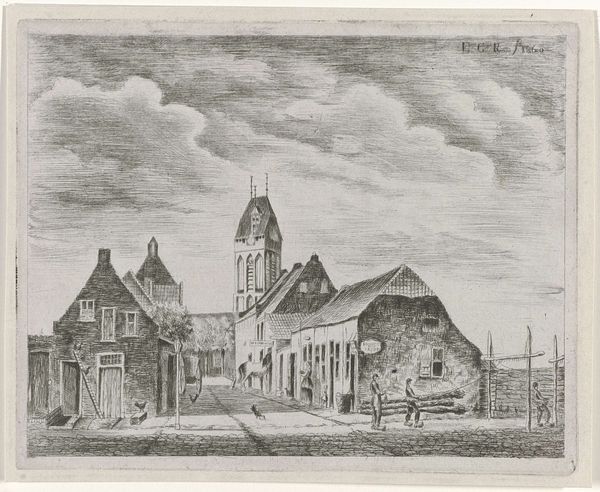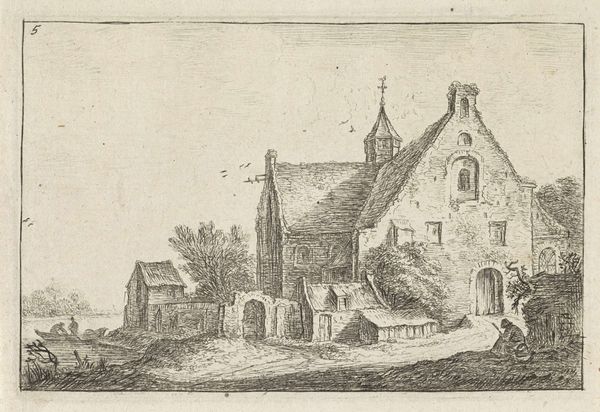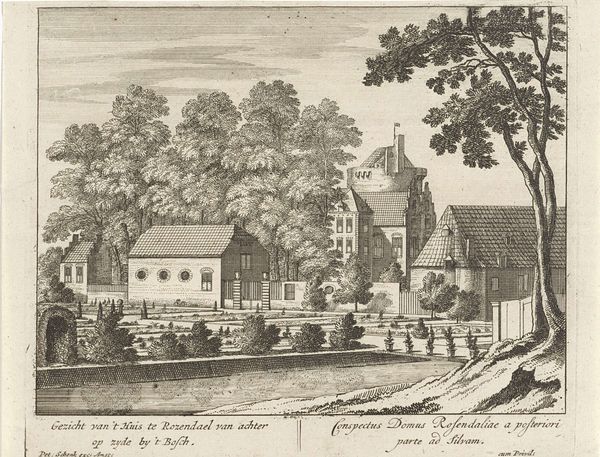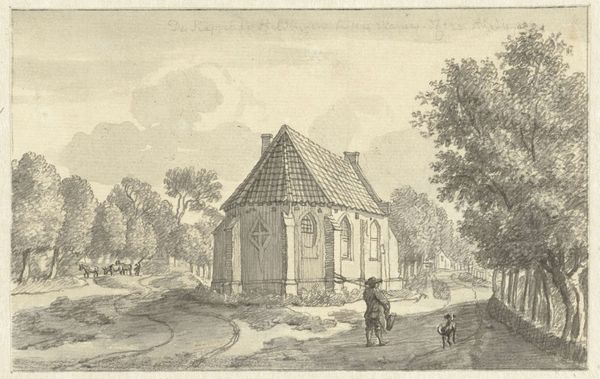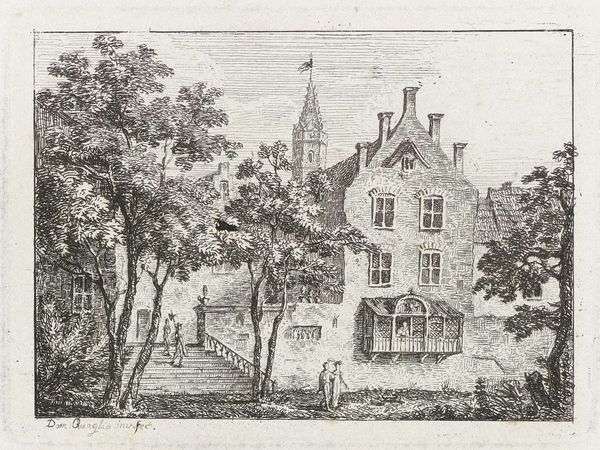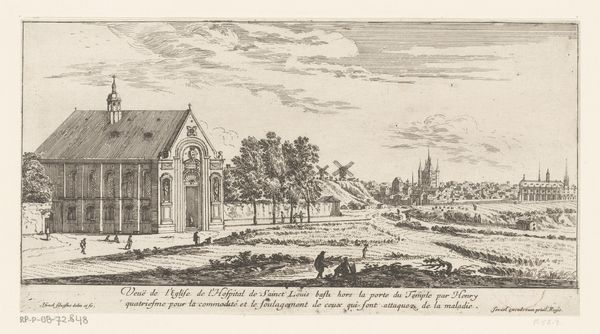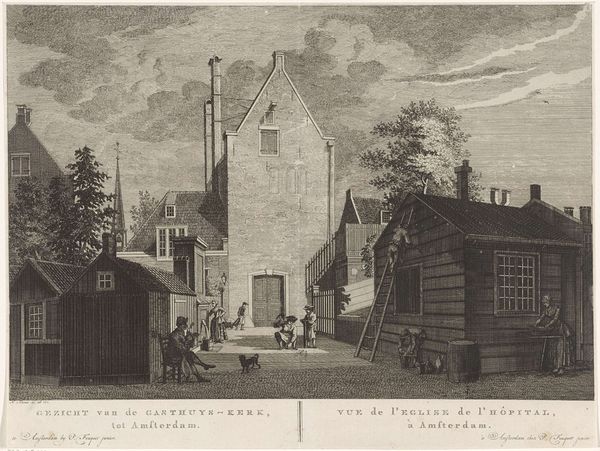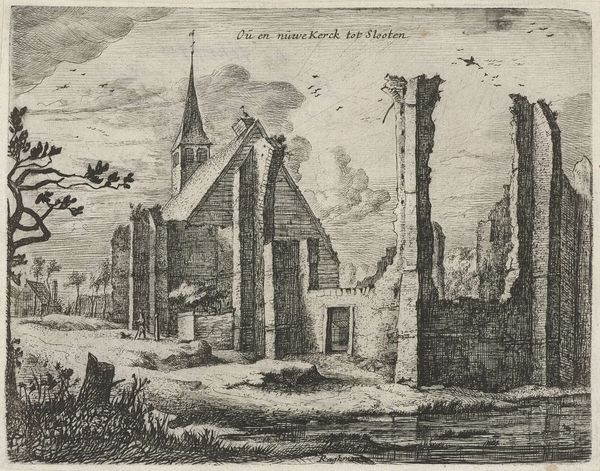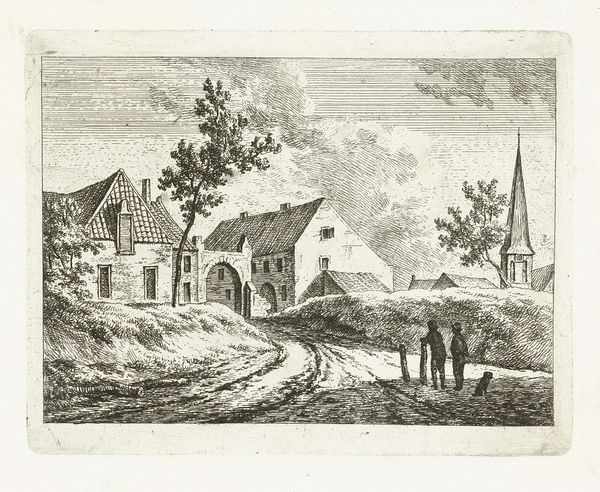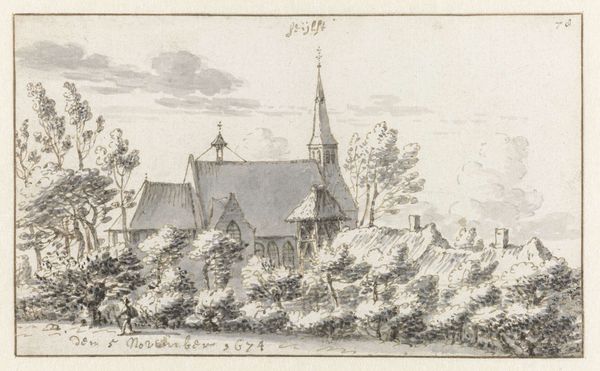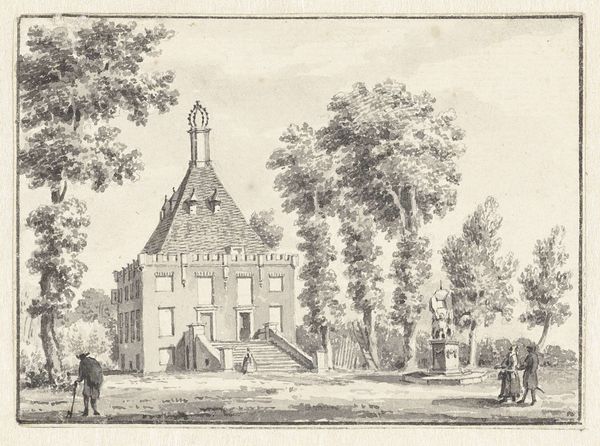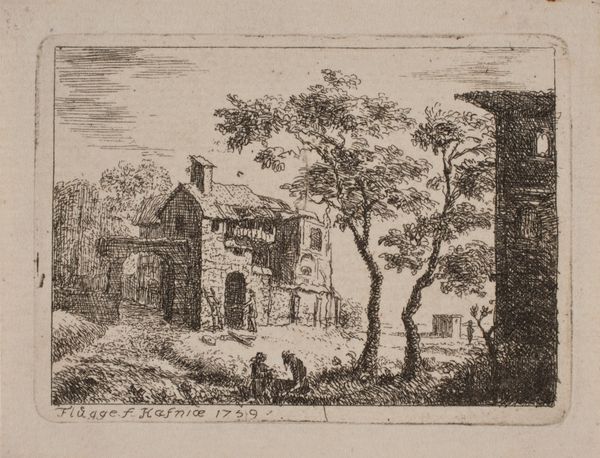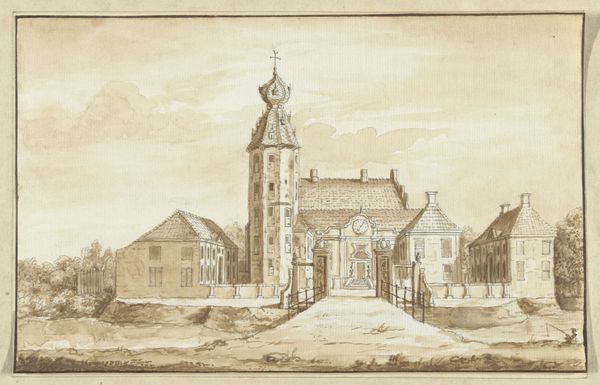
Gezicht op de Sint Petronella's kapel in De Bilt, 1620 1727 - 1733
0:00
0:00
drawing, print, etching, engraving
#
drawing
#
aged paper
#
dutch-golden-age
# print
#
pen sketch
#
etching
#
old engraving style
#
landscape
#
engraving
Dimensions: height 80 mm, width 115 mm
Copyright: Rijks Museum: Open Domain
Curator: This etching, rendered in an old engraving style, is entitled "Gezicht op de Sint Petronella's kapel in De Bilt, 1620," attributed to Abraham Rademaker though created later, sometime between 1727 and 1733. The materials, line, and aged paper grant an evocative glimpse into this Dutch landscape. What do you make of it initially? Editor: It has the air of a record, a kind of architectural document. The fine lines create an atmosphere of gentle, if slightly melancholic, observation. Curator: Precisely. Rademaker wasn't necessarily after aesthetic grandeur, but the documentation of cultural markers. Consider the chapel itself. The Sint Petronella's kapel would've carried centuries of meaning for locals, a nexus of memory and possibly pilgrimage. Even the inclusion of ordinary people gives a broader sense of the cultural sphere around such buildings. Editor: You raise an important point about the cultural significance. Chapels like these acted as localized power centers and communal symbols. By depicting it amidst the houses and everyday activity, Rademaker embeds the spiritual in the mundane, reminding viewers of religion's integral position within Dutch society. But why this revival of interest in seemingly ancient monuments? Curator: The Dutch Golden Age was long over, but interest in the nation’s heritage continued. Such images offered visual continuity, connecting present viewers to their rich, often religiously charged, past. These etchings would circulate among a specific class, reinforcing notions of shared identity through shared cultural symbols. Editor: Yes, and how that narrative is controlled! This wasn't neutral documentation; Rademaker made deliberate choices to present the building, shaping perceptions. By controlling imagery, he shapes a national history, one potentially idealized or carefully curated for the Dutch audiences of the time. The people included are clearly generic types, lending authenticity while eliding specific class conflict, or dissent. Curator: I agree that there is curation, however, I would be careful interpreting too strongly, I think, more likely there are other, simpler reasons for what has been included. It's fascinating how this unassuming etching opens into broader questions of history, memory, and identity. Editor: Indeed, Abraham Rademaker has given us much to consider beyond this aged illustration. It is a remarkable snapshot that raises crucial questions about how images can act as repositories of both explicit historical narrative and quiet cultural suggestion.
Comments
No comments
Be the first to comment and join the conversation on the ultimate creative platform.
